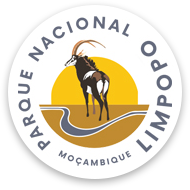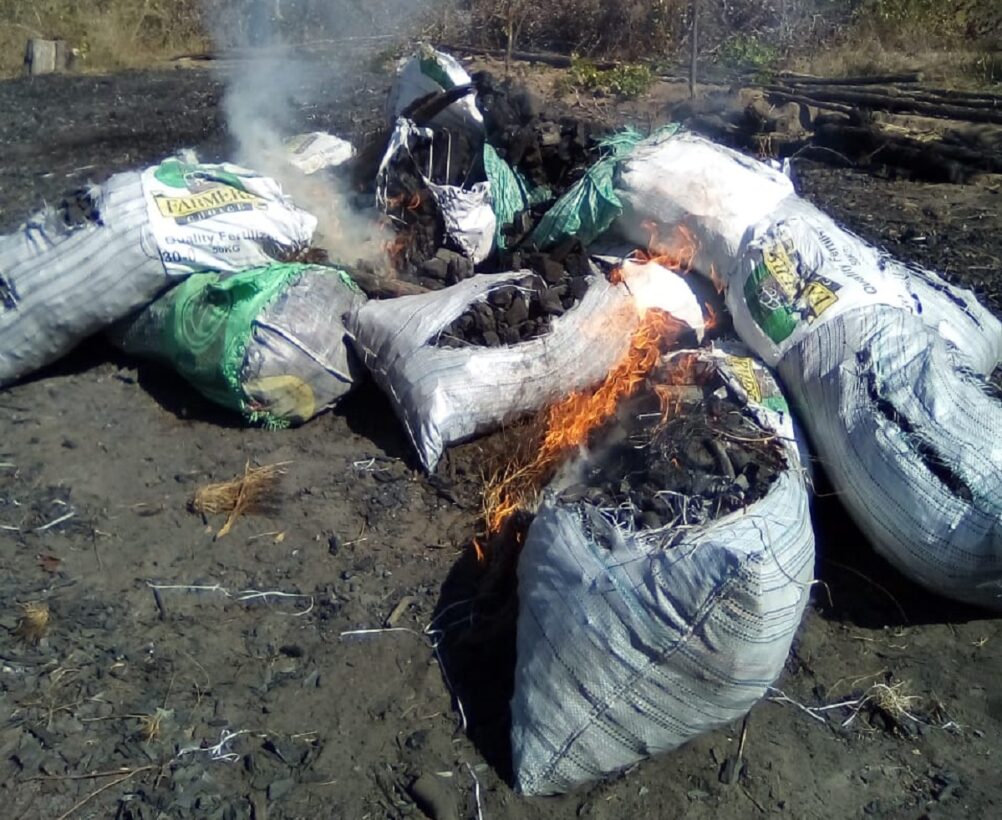A joint operation by rangers from Banhine and Limpopo national parks in Mozambique has dealt a major blow to illegal charcoaling in Banhine, with the clearing of 28 charcoaling camps found by the counter-poaching unit in the 700 000 hectare conservation area.
Both these parks are managed by the National Administration for Conservation Areas (ANAC) in partnership with Peace Parks Foundation.
The two-day operation saw a total of 1 198 bags of charcoal destroyed, along with 29 thermos used for producing charcoal, machetes, axes and a chainsaw. The anti-poaching units also came across the carcasses of various animals poached by the charcoalers.
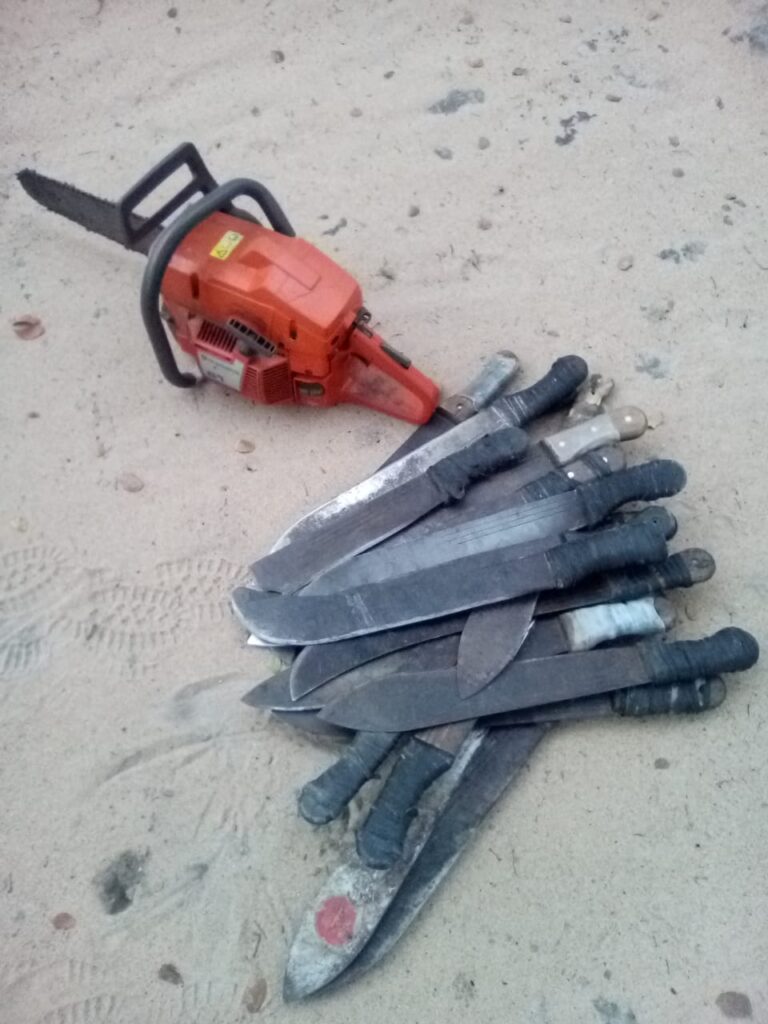
A Bat Hawk aircraft, along with a Robin R44 helicopter, were deployed from Limpopo to identify the charcoaling camps from the air, providing co-ordinates that allowed rangers from Banhine to move in on the ground.
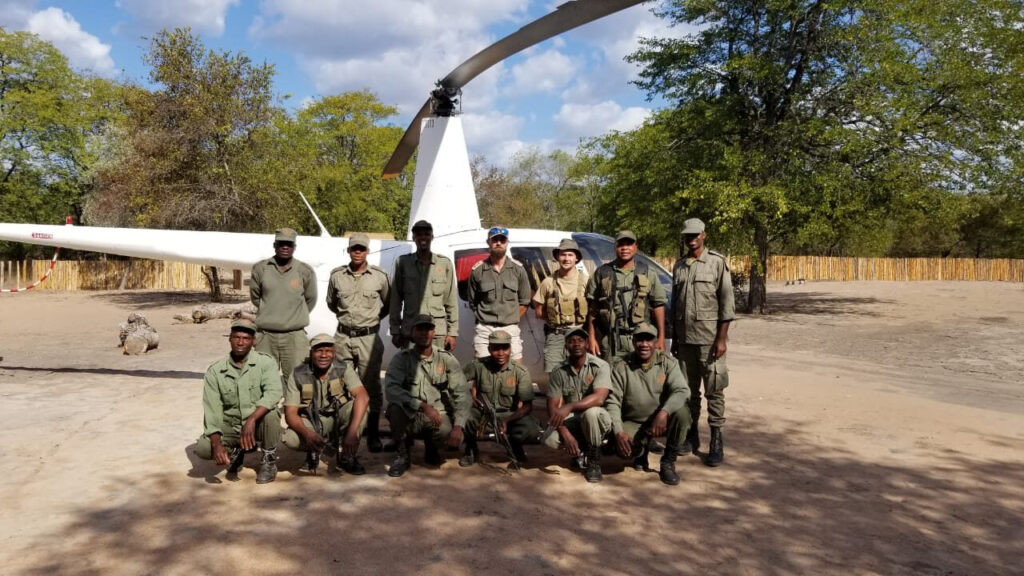
These are commercial operations which result in deforestation of the reserve and ensuing destabilisation of natural ecosystems. Halting illegal charcoal production has therefore been a key focus of counter-poaching efforts in the park, so this latest development is significant in terms of our efforts to combat the practice.
Willem Scheepers, Peace Parks Counter-Poaching Unit Coordinator, Banhine National Park
Banhine is a critically important component of the Great Limpopo Transfrontier Conservation Area (GLTFCA), as it lies within the wildlife corridor that stretches from Kruger National Park in South Africa, through Limpopo and all the way up to Zinave National Park. In July 2018, Peace Parks and ANAC formalised their long-standing alliance in developing Banhine National Park with the signing of a partnership agreement focused on strategically protecting and sustainably developing the conservation space. The strengthening of counter-poaching and law enforcement strategies has been the first priority, as it will pave the way for rewilding, tourism development and community upliftment.
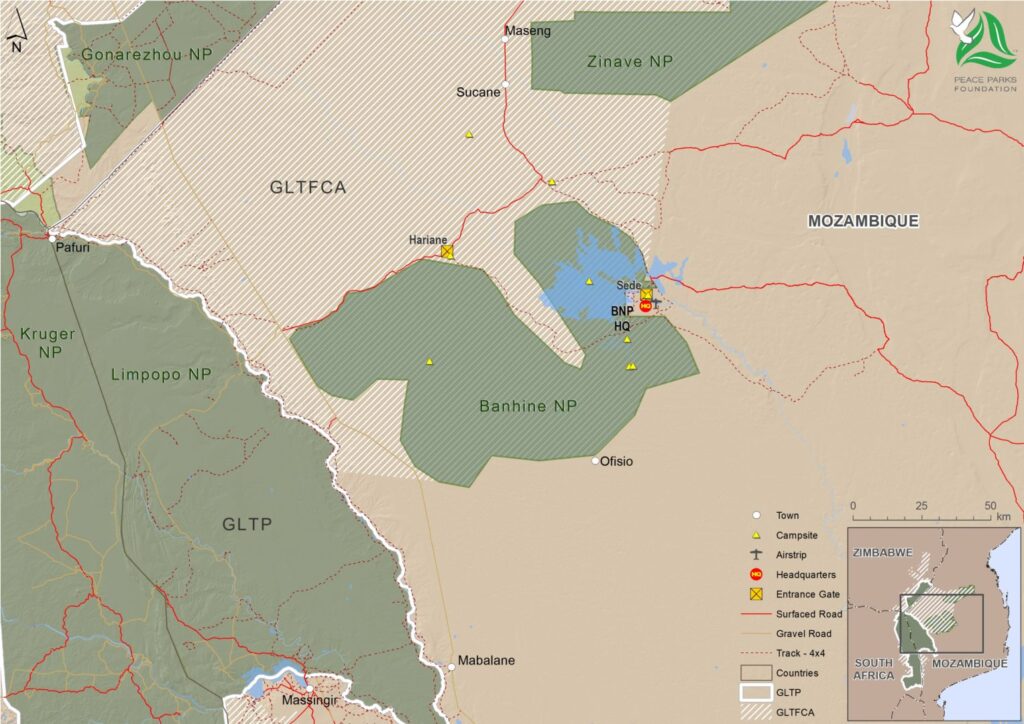
Abel Nhabanga, ANAC Park Warden for Banhine, explains that counter-poaching initiatives are important for the future socio-economic development of communities living in and adjacent to Banhine, as they prevent unsustainable use of the land that these people depend on for their daily subsistence.
“As part of the collaborative effort to rehabilitate and protect Banhine, communities should share in the benefits of conserving the Park. Protecting the ecosystems and natural resources and working together to find sustainable ways in which to do the is the first step in being able to provide viable livelihoods to these communities through conservation. Illegal charcoaling and other environmental crimes does not achieve this goal.”

At judicial level, the country is supporting the efforts of the rangers on the ground by handing out proportionate sentences to those who act against the Mozambique government’s efforts to protect the environment. In May this year, for example, a perpetrator who was caught hunting illegally in Banhine was sentenced to 12 years in jail.
Situated in central southern Mozambique, Banhine features extensive plains and flood areas, which form crystal clear lagoons that are important passage points for migratory birds that flock there enmass during the rainy season. Wildlife translocations are planned in future, in order to rewild the park and capitalise on the significant eco-tourism potential offered by the region.
In recognition of the importance of community involvement in conservation, the Park has also provided COVID relief support throughout the pandemic, which has included the employment of around 100 community members.
